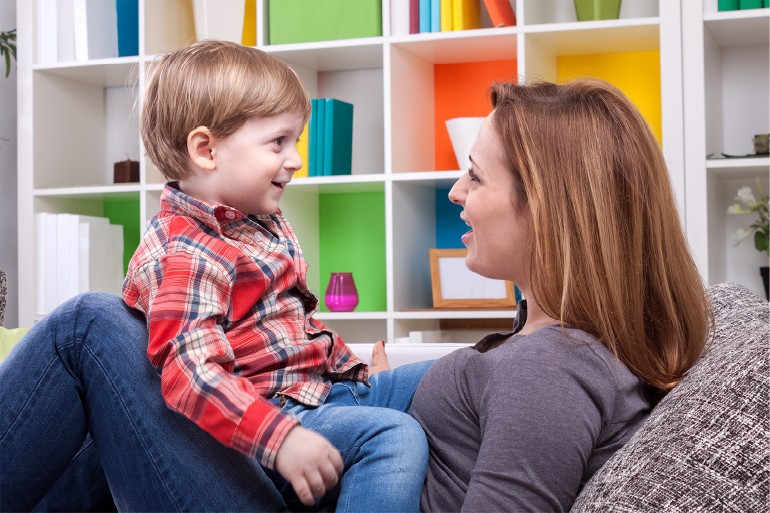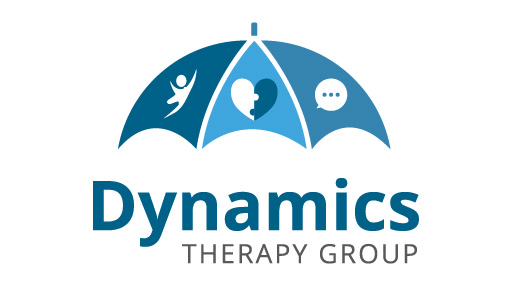
What is Echolalia Speech?
Echolalia is the terminology used to describe the repetition or echoing aloud of words and sounds. It can be a symptom of various disorders including aphasia, dementia, and traumatic brain injury but it is often associated with Autism Spectrum Disorder (ASD) (Rudy, 2022).
The patterns in the way echolalia progresses
According to Prizant (1983), echolalia can be a stepping stone to flexible language development. Typically developing children tend to start learning language by understanding and using single words, and gradually progress to the next step where they string 2 to 3 words together to make phrases and sentences.
Researchers who studied echolalia have noticed patterns in the way echolalia progresses in children with ASD. Initially, children would imitate big chunks of language without understanding what they mean. These chunks of words are usually more complex than they could put together themselves, and they do not usually comprehend what the individual words mean.
For example, a child might say, “It’s my turn” every time he wants his peer to take a turn. He does not necessarily know what “my” or “turn” mean individually and he cannot use this word in other sentences therefore he uses the pronoun incorrectly (using “your turn” instead of “my turn”).
Later on, they begin to modify these chunks of language by mixing and recombining words and phrases that they know. As their understanding of language develops, some children use shorter sentences to express themselves. Over the time, language becomes more spontaneous and flexible. More words and phrases are used appropriately once their understanding of language increases.
The Types of Echolalia
According to The American Speech-Language-Hearing Association (ASHA), there are two types of echolalia—immediate and delayed.
- Immediate echolalia refers to utterances that are repeated immediately or after a brief delay. It usually occurs within two conversational turns.
- Delayed echolalia refers to utterances that are repeated after a significant delay (Prizant & Rydell, 1984). When a child repeats learned phrases that are more complex than what they can produce spontaneously, it would usually be a delayed echolalia.
Is it alright for my child to be repeating words?
Echolalia is a normal part of language development and this can be seen in children who are starting to talk. Most children learn to speak by repeating what they hear around them. It is common for children between the ages of 1 and 2 years to be echoing or imitating sounds and words said to them. As they turn 2 years of age, they should start to use more spontaneous two words utterances. By the age of 3, children should be able to use short simple sentences to communicate with people around them. As they advance in their language skills, the use of echolalia will slowly decline. Even though a minimal amount of echolalia will be noticed, this behaviour usually takes place when a complex question is posted to them.
However, some children do not move past this echolalia stage and continue to imitate what they have heard. For example, instead of using their own words, some children would repeat a whole segment of what he has heard from a TV program or their favourite cartoon show. This type of echolalia is not a part of the typical development and could mean that there may be an underlying difficulty with using language. It is crucial to note that some children can be very enthusiastic about a new TV show or cartoon and focuses a lot of his conversations around them for a period of time but it should reduce as the novelty wears off.
Why do children with autism use echolalia?
In the past, echolalia has been perceived as meaningless and without communicative function. However, an increase body of research has found various communicative functions of echolalia such as to take turns, to make requests, to reject or to comment on a topic (Stiegler, 2015). For many children with ASD, echolalia is a significant first step toward the use of spoken communication. Below are a few examples that further explain on the communicative functions of echolalia:
- To request for things
Example: A child might say “Do you want to play with bubbles?” to ask for bubbles, as he heard others offer bubbles this way in the past.
- To initiate a conversation or to keep one going
Example: To initiate a game of Hide and Seek by saying, “Count 1,2,3,4!”
- To direct someone’s attention towards something
Example: A child might draw attention to something he saw by using phrases he has heard before to direct attention to something else, such as, “Daddy’s here!”, “I have toys!”)
- To protest or refuse
Example: If a child imitates “So do you want those peas?” he might actually try to say, “I don’t want those peas”
- To accept or agree on something
Example: A child might imitate “Do you want some sweets?” when someone asked him the same question, he might actually mean, ‘Yes , of course I want them!”
- To calm down
Example: A child might say “Mummy is coming” instead of “I want mummy”
- For self-stimulation: This behavior can also be referred as “stimming”. Some children with autism use this echolalia speech pattern to cope with overwhelming sensory challenges. For some children, it can act as a calming strategy to repeat what is being heard.
- To self-talk: When children with autism are faced with a stressful or challenging situation, they sometimes use repeated phrases or scripts to support their communication. Memorized phrases may help a child to talk themselves through a difficult process using phrases heard from parents, teachers, and television or from the social media.
Can Echolalia be treated?
Echolalia can happen for various reasons and it is crucial to understand why your child is repeating or echoing. You can do this by speaking to a qualified speech and language therapist. One of the most common reasons why echolalia is used is due to having poor language skills. This could either be difficulties with the child’s understanding or use of language. For instance, if a child does not understand an instruction given, or does not know what he should say, repeating what he heard could be an easier option. The speech and language therapist will then work on the language and communication skills that the child is lacking in and as a result, the echolalia may reduce as his language skills increase. Below are some of the strategies that a speech and language therapist may use to reduce echolalia behaviour.
Strategies to reduce echolalia
What can you do?
Work out the reason of echolalia speech
The key to stopping echolalia that is self-stimulatory is to find out the reason of such action and introduce appropriate strategies that are effective. For example, if your child is using echolalia because he is upset, see if you can find an alternative to prevent the child from feeling upset. This could be by introducing some calming strategies that will help him regulate his emotions or to read him a social story about what is happening and how he could feel less upset.
Self Stimulatory Echolalia
Some children use echolalia because they find that it comforts them. This is known as self stimulatory because the children it makes them feel good. Self stimulatory behaviors are also known as repetitive behaviors. This can be presented in different ways, such as hand-flapping, rocking back and forth, or spinning objects. Echolalia is considered as a type of self stimulatory behavior.
For instance, some children may repeat their favourite movie scripts as a source of comfort because the lines from the script are fixed and predictable. When a child does not understand the world around him or why something is happening, he may choose activities that he is familiar with, such as reciting the entire conversation from his favourite video clips from Peppa Pig or sing a nursery rhyme that he likes. It is comforting for the child because he knows that the script and the lyrics will always sound the same no matter what.
Repeating phrases out of boredom
If your child is using echolalia because he is bored, it may be helpful to remind him to re-focus on the task at hand. For example, if he’s quoting conversations from his favourite cartoon during dinner time, you could remind him that it is time for us to eat and he needs to pay attention to finishing his food. Or, an adult could ask the child questions about what he is talking about to ensure and encourage the child to place his attention back on what he is doing at that moment.
Repeating phrases out of habit
If you have an older child and your child is not aware that he is using echolalia but is just doing it out of habit, it might be worthwhile to have a conversation with them and discuss about the expectations of when it is appropriate and when it is not to talk. After that, if the child talked during an inappropriate time, gently remind him of the rules that have been brought up. This will allow him to have a better awareness of his behavior and encourage him to take charge of how he responds to others.
Repeating phrases or sentences
If your child is doing echolalia with the entire phrase or sentence, you can support this by modelling the correct way of respond. For instance, if your child comes up to you and says:
Child: “Do you want chocolate?” you can say, “Can I have some chocolates?” and encourage him to repeat it back to you. After you have done this for a few times, you can start to clarify that what your child says does not make sense. For example, if he says, “Do you want some chocolates?”, when he meant “I want chocolate”, you can say, “No, I do not want chocolates but you want them”. Say, “I want chocolate”. This will allow your child to be aware that what he said is different from what he meant.
Repeating questions
If your child is using echolalia when answering questions, this is usually due to not knowing how to provide an answer. You can help by asking the question then immediately say the answer with a single word without pausing. For example:
Adult: “Do you want it? Yes”
You would hope that the child will just imitate the “yes” part of it. If not, encourage the child to imitate “yes”. Keep doing this until the child is consistently repeating just one word answer. Once the child is able to do so successfully, ask the question again but now just say the first sound of the answer. For example,
Adult: “Do you want it? Yyyy-”
This is also known as a verbal cue and you can keep doing this until your child is consistently saying the answer after the first sound was produced. Once this has been achieved, ask the questions not just mouth the first sound of “y” but do not say it out loud. Direct the child’s attention to your mouth so he sees that you are starting to say the sound. Once your child has mastered one question form, try with a different question so you can build up a variety of questions and starts answering them spontaneously without using echolalia.
Last but not least, do remember that producing echolalic speech is a pleasurable activity that some children enjoy and there is nothing wrong with that. Children should be allowed to have some time during his day to use this echolalia as down time, just like you would allow a child who loves playing with dolls some time to play with them for some down time. In short, echolalia may not always be a cause of concern. However, if you have any worries related to your child’s language development, it is advisable to consult a qualified speech and language therapist in order to enable your child to receive the appropriate intervention.
(The SLP Solution, 2015)




